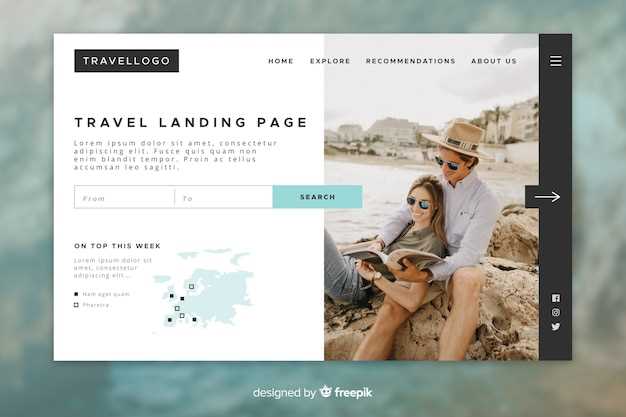
Planning and sharing detailed guides for exploring new places has become an essential part of modern travel. People now seek inspiration and practical advice from passionate explorers who can offer both insights and convenience. Whether you’re charting a day trip or an extended getaway, your narrative can serve as a roadmap for others who wish to follow in your footsteps.
Capturing your audience’s attention requires more than just listing destinations; it’s about weaving together personal experiences, useful tips, and fascinating details that spark curiosity. The goal is to deliver a narrative that goes beyond simple instructions, offering readers a sense of excitement and possibility.
As you dive into the process, it’s essential to focus not only on the locations but also on how to present them in a way that resonates. Whether it’s through well-structured content, engaging visuals, or unique perspectives, your approach can turn ordinary destinations into unforgettable experiences for your audience.
Understanding Your Audience’s Needs

When crafting content for any type of journey or adventure, it’s crucial to consider who will be reading it. Tailoring your posts to suit the preferences and expectations of your audience can significantly enhance their experience. Whether your readers are seeking relaxation, exploration, or cultural immersion, the key is to align your advice and recommendations with their goals and interests.
Identifying the specific motivations of your followers allows you to provide value that resonates deeply with them. Understanding their travel preferences, budget constraints, time limitations, and desired level of detail helps you form content that feels personal and relevant. Engaging your audience means being attuned to what they truly seek in their quest for discovery and leisure.
Choosing the Right Destinations to Feature
Selecting the appropriate locations to highlight is fundamental to the appeal of your content. The destinations you choose should not only align with the interests of your audience but also offer a unique or memorable experience. It’s important to strike a balance between well-known spots that provide a sense of security and lesser-known gems that offer something new and exciting.
Research plays a key role in this process. Understanding the vibe, activities, and cultural richness of each place can help you cater to different types of travelers. Whether it’s for relaxation, adventure, or cultural exploration, the right choice of destinations will keep your audience engaged and eager to learn more. Prioritizing diversity in location types and experiences will also ensure your content remains fresh and dynamic.
Structuring Your Itinerary for Clarity

Clear organization is essential when presenting a series of destinations and activities. An easy-to-follow structure ensures that your readers can quickly grasp the details and navigate through the plan without confusion. A well-organized approach allows them to envision their experience step by step, making the entire concept more accessible and enjoyable.
Breaking down the content into distinct sections, such as days, activities, and important notes, will help guide your audience through each part. Using bullet points, numbered lists, or headers to separate the different elements can simplify complex information and prevent overwhelming the reader. Logical sequencing, such as grouping nearby locations or events together, further enhances the flow and makes the plan more intuitive.
Adding Personal Touches to Your Posts
Incorporating your own experiences and unique perspective into your content can transform it from generic advice to something memorable. Sharing your personal insights, favorite spots, or even small anecdotes helps build a connection with your readers, making them feel like they’re exploring the destinations alongside you. This human element creates a sense of authenticity that resonates more deeply than simple facts or descriptions.
Including personal recommendations, tips from your own adventures, or photos from your own collection can also make the content more relatable. Letting your personality shine through will make your posts stand out, as readers are drawn to real stories and firsthand experiences. These touches not only enrich the information provided but also foster trust and encourage your audience to return for more of your unique perspective.
Incorporating Useful Travel Tips and Tools
Providing practical advice and helpful resources adds significant value to your content. Offering tips that make planning easier or more efficient can greatly enhance your readers’ experience, especially when they are navigating unfamiliar destinations or organizing their schedules. Suggesting useful tools–whether it’s apps for navigation, packing lists, or local transport options–helps ensure they are well-prepared for their journey.
Incorporating these insights shows that you understand the challenges your audience might face and are eager to provide solutions. Sharing time-saving strategies, safety precautions, or budget-friendly options empowers your readers to make informed decisions and feel more confident in their plans. The right combination of tips and resources not only enriches the experience but also reinforces your credibility as a trusted source of advice.
Optimizing Your Blog for Search Engines
To ensure your content reaches a wider audience, it’s essential to make it discoverable through search engines. By improving the visibility of your posts, you increase the likelihood that potential readers will find your site while searching for related information. Effective optimization goes beyond simply using keywords; it involves creating content that is valuable, easy to navigate, and relevant to the queries users are searching for.
Incorporating relevant keywords naturally throughout your writing, optimizing meta descriptions, and using descriptive titles are all important steps in improving search engine rankings. Additionally, focusing on user experience–such as having fast load times, mobile-friendly design, and easy-to-follow navigation–can also impact your site’s performance in search results. The goal is to provide content that not only meets the needs of search engines but also delivers a seamless, informative experience for your readers.

